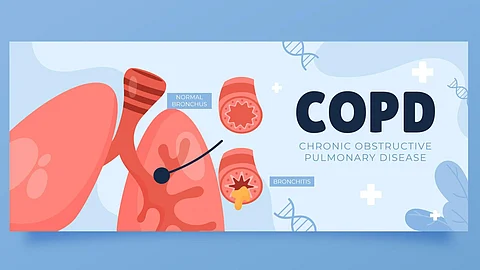We've all experienced a dry cough, occasional shortness of breath, fatigue, or episodes of breathlessness at some point. While these symptoms may seem minor or commonplace, they can be indicative of more serious underlying conditions, especially in an era where respiratory illnesses are increasingly prevalent. It's essential not to overlook these warning signs and to seek timely medical evaluation when they persist or worsen.
COPD is a progressive and debilitating respiratory condition that affects over 55 million Indians, primarily due to preventable causes. Understanding the etiological factors is vital for primary prevention. This article outlines five major causes of COPD, highlighting India-specific data and clinical insights into the pathophysiology.
1. Tobacco Smoking
Tobacco smoking is the most significant risk factor for COPD globally and in India.
● Cigarette, bidi, and hookah use all contribute.
● Bidi smoke contains higher concentrations of tar, nicotine, and carbon monoxide compared to cigarettes.
● Smoking damages airway epithelium, causes chronic inflammation, and leads to mucus hypersecretion and airway narrowing.
● In India, nearly 80% of male COPD cases are linked to smoking.
● Long-term exposure results in emphysema and chronic bronchitis—two key components of COPD.


